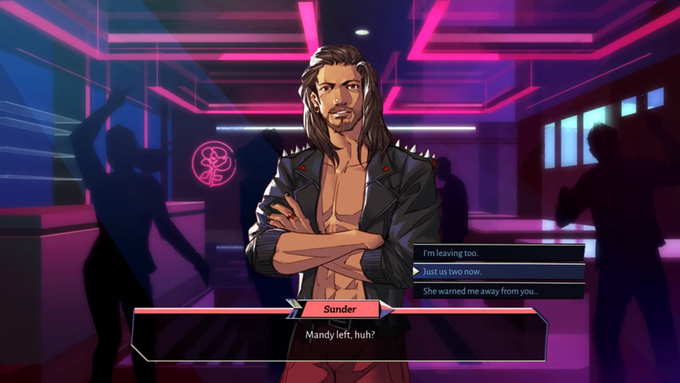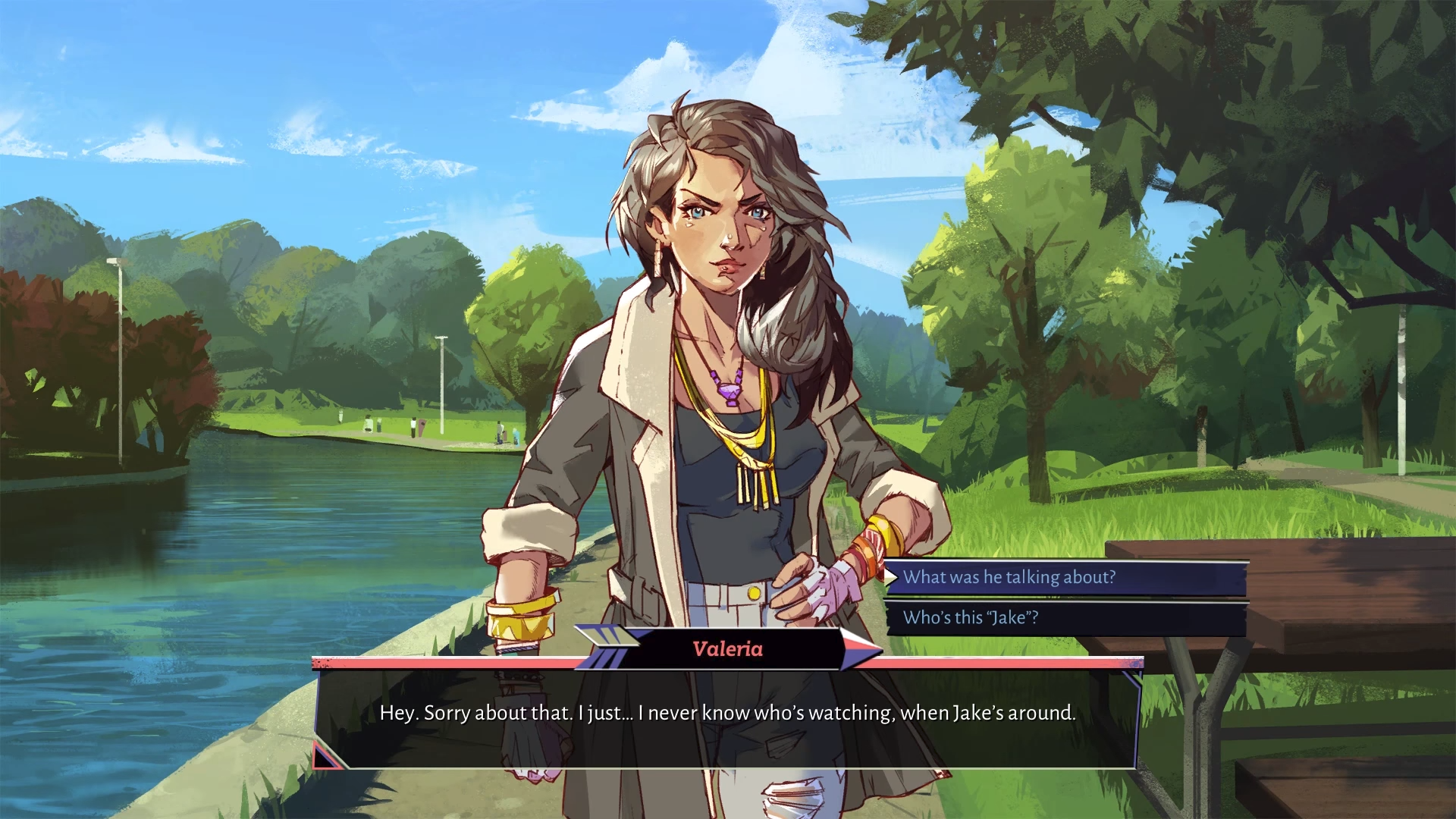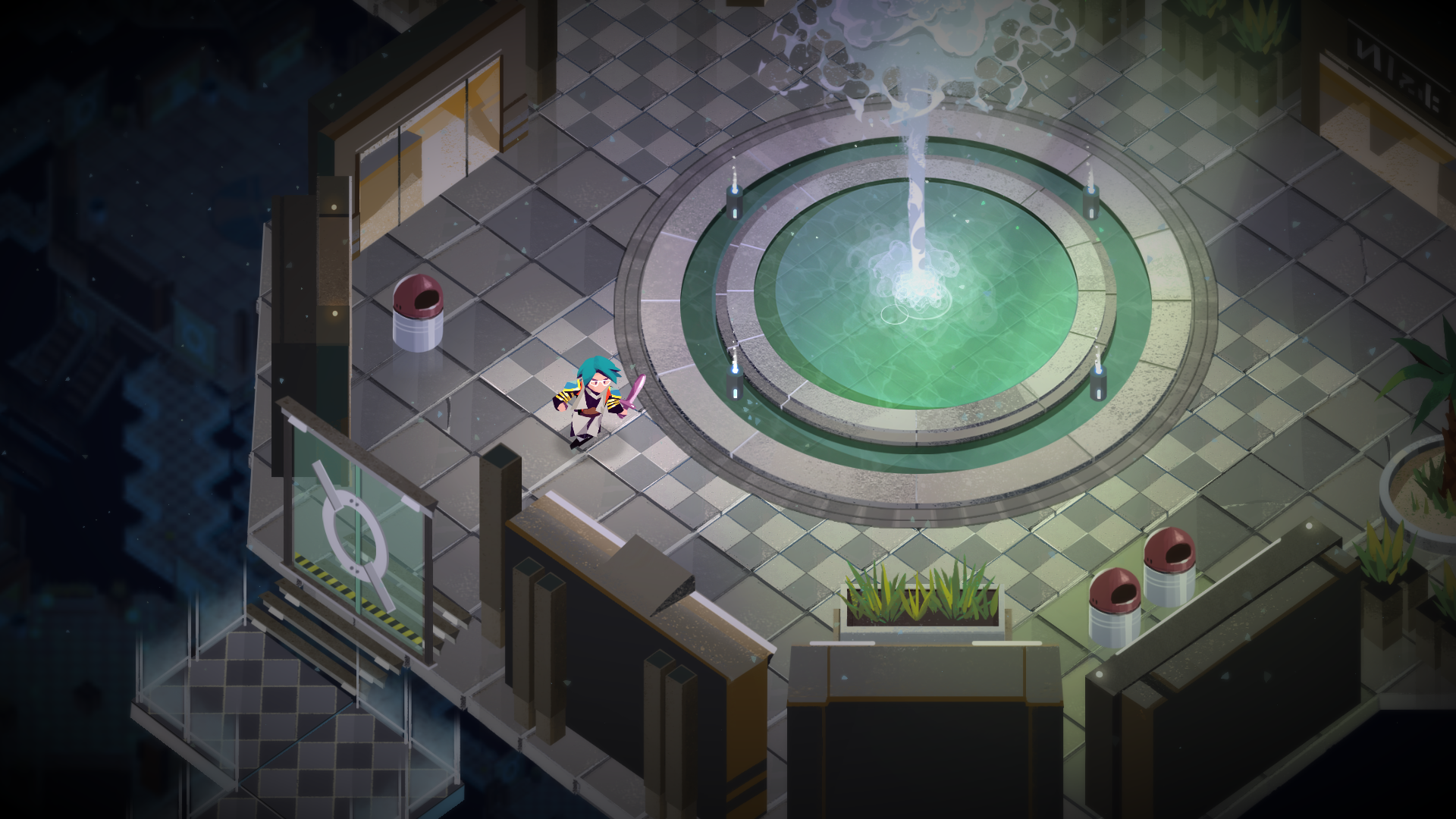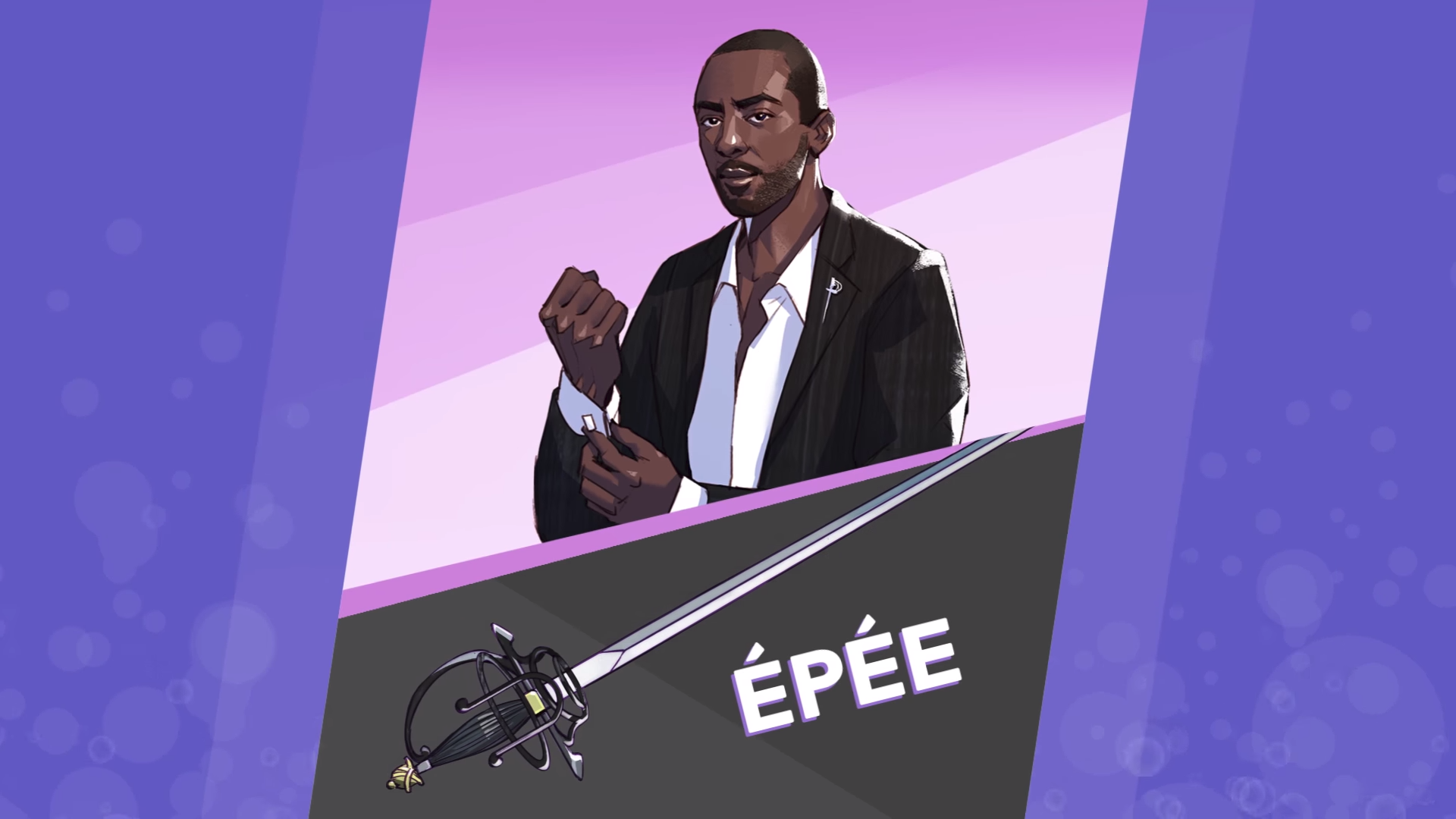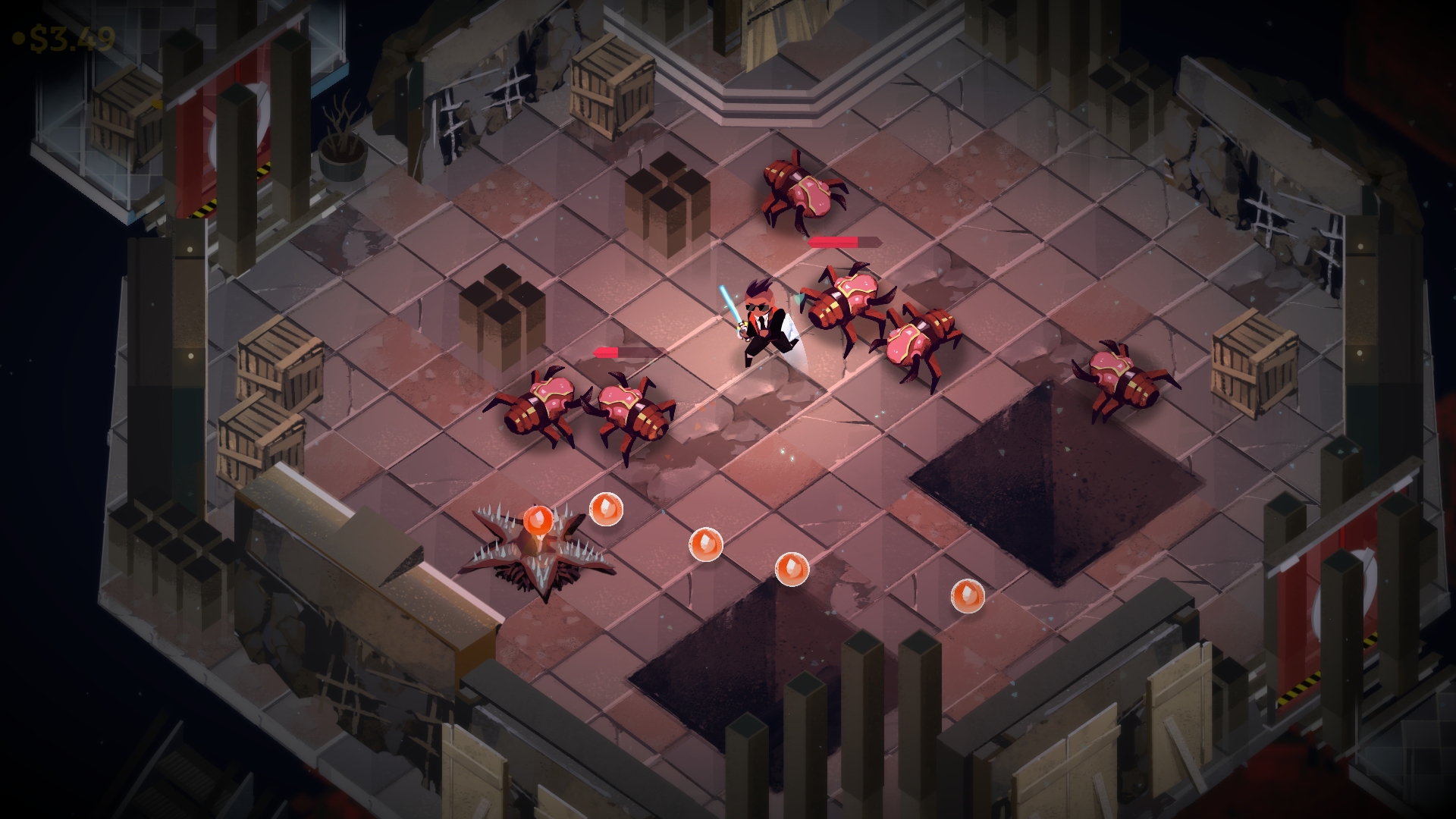Developer Kitfox Games only just recently launched the Kickstarter campaign for its dungeon crawler/dating simulator hybrid, Boyfriend Dungeon—less than 24 hours later, the game was more than fully funded by backers.
Shortly after the campaign’s success, I talked to Tanya X. Short, Director and Designer of Boyfriend Dungeon, and one of the co-editors of the textbook Procedural Generation in Game Design.
Chris: I’m really interested in the duality of the two different genres that Boyfriend Dungeon represents. I’m curious about the origin of it—which came first, the dungeon crawler or the dating simulator?
Tanya X. Short: I think you can see in Kitfox’s history that we’re very interested in dungeon crawlers—that’s kind of all we made, except The Shrouded Isle. (Laughs) So dungeon-crawling came first, and it’s definitely more along the lines of the typical game I tend to play. But I really appreciated it in the past when games have let me build a relationship with other characters, and that kind of became the emotional core, even if it’s not the gameplay core.
I get really restless playing visual novels personally, so I think having that pacing variance can really help players follow what they’re in the mood for.
C: Following up on games that you’ve played, were there any specific games in particular that you played that might have inspired any concepts in Boyfriend Dungeon? Were there any games you played where you said, “wouldn’t it be cool to date your weapons?”
T: No—I have played a lot of RPGs, and I felt often times like they were so close, yet so far from making a story that I would feel included in. So I’ve wanted to kind of make an action RPG that was more inclusive for a long time—at least ten years. The idea of “dating your weapon” came later, but as soon as I mentioned it, the team was like, "yeah, yeah, that makes sense! Adventurers go out with their weapons, and that’s a normal thing that happens." (Laughs)
C: Looping back to Kitfox’s previous games, were there any particular experiences with certain games that you might have kept in mind? Any lessons learned?
T: We’re always learning—that’s one of the things we always say to ourselves. So each game teaches you something different, but one of the base lessons we learned in some ways is to be more true to yourself.
At least for me, as a designer, I felt that with the successful moments in Shattered Planet, Moon Hunters, and the small part that I contributed to The Shrouded Isle, I took a risk, I was more sincere, and I tried to think less about the Steam reviews. I could figure out what I actually cared about and what actually mattered to me.
C: I feel like it might be an understatement in saying that procedural generation is something that you’re interested in. I’d like to hear about what your or the studio’s philosophy on procedural generation in games is, and if there’s anything unique about how you implemented it in Boyfriend Dungeon.
T: I’m interested in procedural generation as a game designer and as a player. There are experiences that you can only get with that tool in your toolbox. It’s not the best for every game, and it’s not a flavor that meshes with all gameplay. So for example, I’ve already gone on record saying that none of the boyfriends in Boyfriend Dungeon have any element of procedural generation.
If we were to procedurally generate a boyfriend, it would be a very different kind of game. We will be procedurally generating the dungeons, and I’m sure we’ll share online—we like doing that.
But we originally started getting into it because it was not only interesting as a designer to tackle an interesting challenge, but it makes the game so much more fun to develop and playtest when it’s not literally exactly the same every time. But generating dungeons is fairly well-understood at this point, so it’s not what people latch onto
Also, for production purposes, it made our first game Shattered Planet able to be a little bit bigger than we otherwise could afford to do with four people. I think it has multiple different functions—I keep saying that triple-A will get on board, but it’s possible that algorithms, because you have to keep the whole thing in your mind when you’re designing with it, might not suit larger teams.
Unless designers can literally mind-meld or join the Matrix, you can’t keep it all in your brain unless you are the designer. Which is why Tarn [Adams], who made Dwarf Fortress and co-edited the textbook [Procedural Generation in Game Design] with me—and we’re making a new one, by the way, called Procedural Storytelling in Game Design—is never gonna have someone else join the Dwarf Fortress team and be able to converse in it the way he does. He can have an assistant that would learn some part of it, but could never quite grok it the same way he does.
C: What was the process of designing and crafting each unique boyfriend? And again, which came first, the persona or the weapon itself? Did you look at a sword first and as “that would be cool to date”?
T: It totally depends on the character. Some characters are there because I see something—for example, if you’ve ever seen a k-pop dance video, you’re like, “oh, I wanna date that. We gotta have a k-idol in there.” I’m interested in different kinds of weapons as well—we wanted to have swords and daggers, and we just revealed a scythe as a cool weapon to date. That’s where Moa, the Hatoful Boyfriend designer, got her inspiration. She thought, “oh, a scythe would be cool. What would that person look like?” And so she started sketching based on that.
I think the important thing to me is that each one is very different—even though they should all be likable. Of course, every relationship has its difficulties, so trying to tell a different story for each one and make them differently likable is the main challenge.
C: How do the character designs reflect specifically in the gameplay? How do weapons play differently from each other?
T: They’re all melee weapons, but we’ve actually been looking at a lot of other action RPGs and looking how they differentiate their weapons. There are some that are kind of obvious; you’ll have weapons that are faster but less precise, or maybe they’re slower but do more damage. The dagger is probably the most differentiated right now; she tends to bring you forward as you’re stabbing, so you have to get really close, and you step forward a lot when you’re attacking with her—but that means that you’re in a risky position as well. You can do a lot of damage really quickly, but if you’re not careful, you’re vulnerable.
We truly try to focus on the dynamics of how it feels to play with that character. And then they’re commentating the whole time you’re playing with them as well, so as you’re exploring and seeing new things, some of your weapons are scaredy-cats—they’re not the bravest of weapons, whereas other ones are almost bloodthirsty. Most of the differences are mechanical, but part of it is also just how it feels to have them as a companion.
C: Something I haven’t really been able to gather is what kind of character you’re playing as. I’m interested in what extent you can customize your playable character in terms of appearance, gender, or anything else. How much room do players have to craft their own character?
T: Part of the reason why we haven’t said that much about the player character is because it is quite customizable. We don’t actually ask your gender, we ask your pronouns: “would you rather be he, she, or they?”
Regardless of what you pick, you have different looks you can pick from, and we’re still working out the details of what all that means, but it doesn’t really change very much. For this game, it’s really just how you feel comfortable looking, and we’ll probably let you change that regularly throughout the game.
C: Going back to the duality of the two genres being represented, do you think that fans of either genre will take to the other one well?
T: That is a classic difficulty. I was talking with Ryan Clark from Crypt of the NecroDancer, and he was warning me that it is dangerous. Making a hybrid genre game, you don’t know. People have what they like, and who could have predicted whether rhythm game people would have liked roguelikes? Maybe not very many people, but it turned out it was millions of people.
For me, I think there have been other games that have combined two different elements successfully in other ways. I think our unique approach is the increased inclusivity and the unique humor and Kitfox flavor that we get to bring to it. Personally, as a player, I wish more people would make this kind of blend.
I don’t think that stories and relationships are genre-specific in the same way that rhythm or roguelikes are. It’s possible that there will be too much reading for dungeon crawl enthusiasts; it’s possible that there will be too much action or stress for some visual novel enthusiasts. But I think there’s a chance, that especially with difficulty modes, we’ll be able to offer a varied pacing, and its kind of up to each player what they’re in the mood for. I think that getting to know someone is a universal joy.
C: With all of this genre switching, are there any elements that are constant in both portions of the game that give it a cohesive identity?
T: You as the protagonist are finding yourself, and you’re growing into adulthood in a way. Because when you arrive in town, you’ve never been on a date before, and you’ve never had a job, and you kind of get to do both instantly. You’re finding yourself and defining your own tastes.
It happens throughout whether you’re leveling up in the dunj [dungeon] or you’re getting to know people. But the weapons are kind of the through-line—you gain “love ranks” with them. I don’t want to talk too much about the details until we’re finished with the system, but right now, the way it generally works is that you hang out in the dunj and you beat up monsters together, and when they feel comfortable they’ll invite you on a date in town. It’s up to you if you want to go see what happens on that date, and hopefully earn a love rank up together.
C: The Kickstarter campaign was fully funded—more than fully funded. What is it about this specific premise that you think resonated with people enough to gain all of this excitement?
T: I think it’s anyone’s guess, really. You have as much information as I do at this point. But if I had to guess, it’s that ten years ago, when I said I wanted to make a more inclusive, romantic RPG, I thought for sure—because I was still in school at that point—that by the time that I was in a position to be making games, that someone would have made it.
I thought, “oh, well, it’s too bad that I had this insight into something that everyone would love. But you know, at least I’ll get to play it, and by the time I’m a lead game designer, I’ll get to work on all those games! There’ll be so many!”
But they’re still rare. There are still a couple out there, but they’re rarer than I thought they would be. So think that its just a hungry, hungry audience that’s not even necessarily a niche, because I don’t think love is very niche. And I don’t think dungeon crawlers are very niche. I think they’re gonna expect more and more refinement of the genre over the next 10, 20, 50 years. But I like to think that this is just the beginning of people like me getting to play the games they’ve always wanted.
C: Lastly, anything we’ve might have missed that you’d want to communicate to our readers at DualShockers?
T: Something I was talking to my team about this morning is that it’s not obvious from the outside how much you don’t know about your game, and how it will resonate with other people. About a year ago, a few months after we started working on the game, I showed what we had up to that point to a few publishers and platform holders. And none of them liked it. (Laughs) None of them understood.
They know what current games look like, and they knew what our game looked like, and they said: “no thank you, this doesn’t make any sense, and this is weird.” (Laughs) Even the ones who were about weird games, their gut said: “no, this isn’t for me, so it doesn’t make sense for me to fund this.”
So I started getting really nervous, because when you get like, ten people declining to publish your game, you start wondering, “well maybe I am crazy, maybe this game doesn’t make any sense, I don’t know.” I literally had multiple people tell me the name wasn’t good. So in retrospect, everyone can laugh with me, but at the time, the team was like, “huh, well, maybe we’re blind to our own thing. You never know.”
That’s why we announced [the game] last October, which was maybe really early, but we announced it that early because we had started doubting ourselves. So I guess the only thing that I would tell people is that if you’re working on something that you feel should exist in the world that speaks to you, then you should keep believing in yourself, and find other people that share your gut feeling, because it might be different than the people in power.
While Boyfriend Dungeon has reached its initial funding goal, you can still check out the campaign, its remaining stretch goals, and more information about the game at the game’s Kickstarter page. You can also enjoy the latest trailer.
Boyfriend Dungeon, as of now, is due for release on PC and Mac sometime in 2019.

